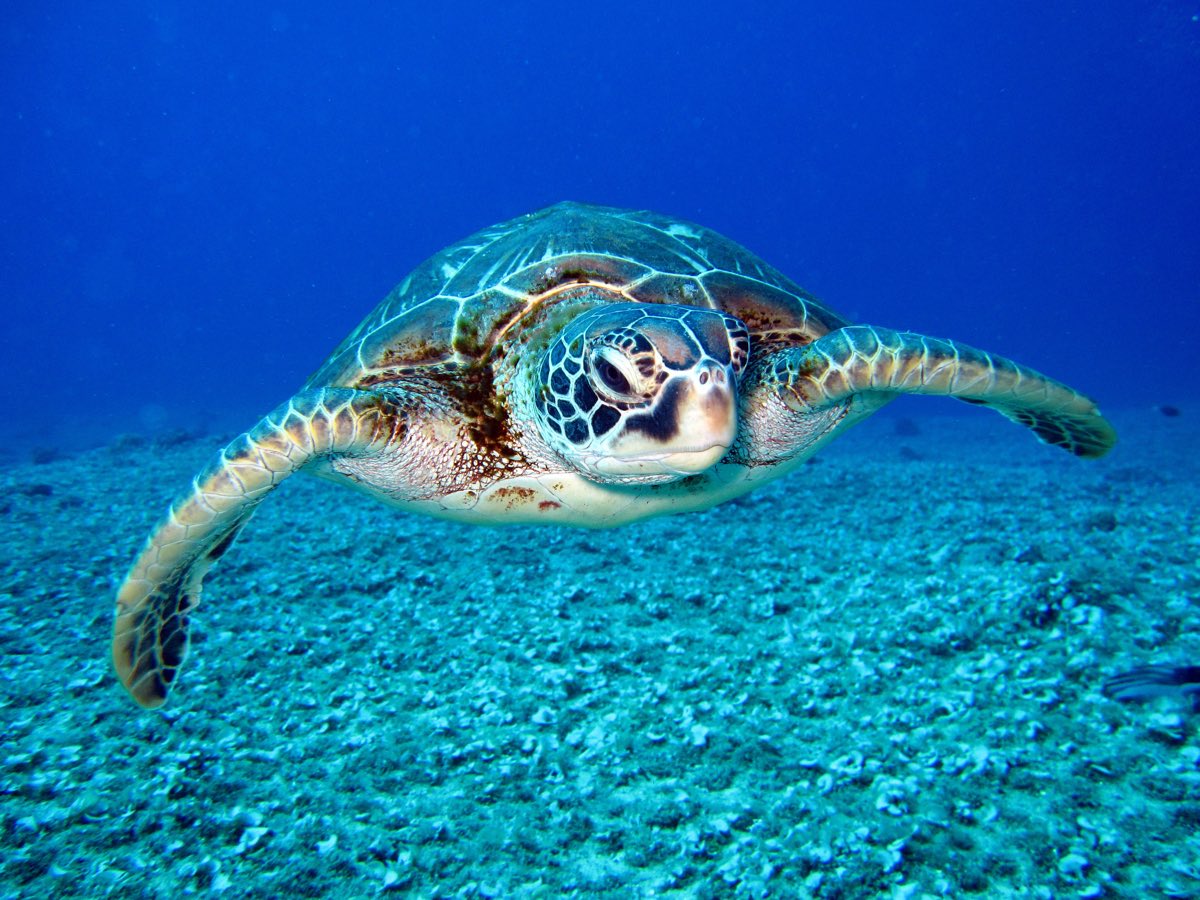Find out how you can help save sea turtles in Costa Rica!
One random night, Yogi Aaron announced that he would be taking a few of the volunteers on an adventure. Without telling us where we were headed, he informed us we would need to be on the road by 5am the next morning, and we may or may not get muddy, so we should wear clothes and shoes that we don’t care about.
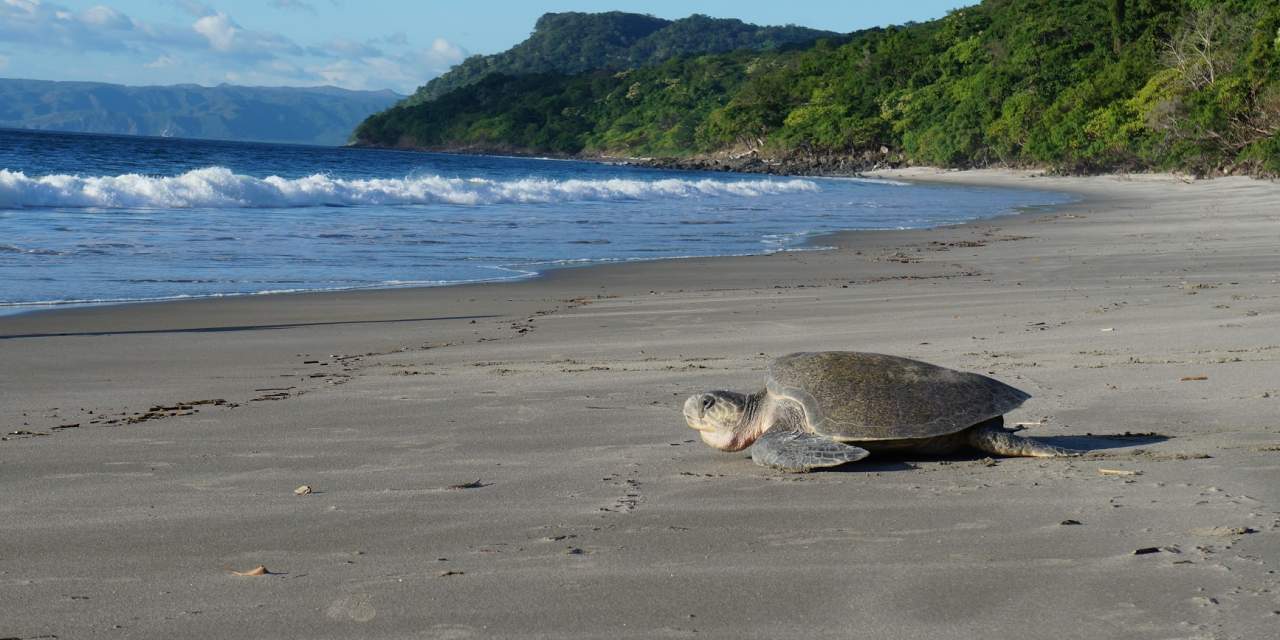
As we set off just before the sun rose, we headed higher and deeper into the jungle.
After 20 minutes we arrived at the Osa Conservation Center, we were handed rubber boots. We were told that we would be rescuing sea turtle eggs so that they could safely hatch away from predators and robbers.
After about a 30 minute hike down a steep, muddy jungle path along a river, we found ourselves on the beach.
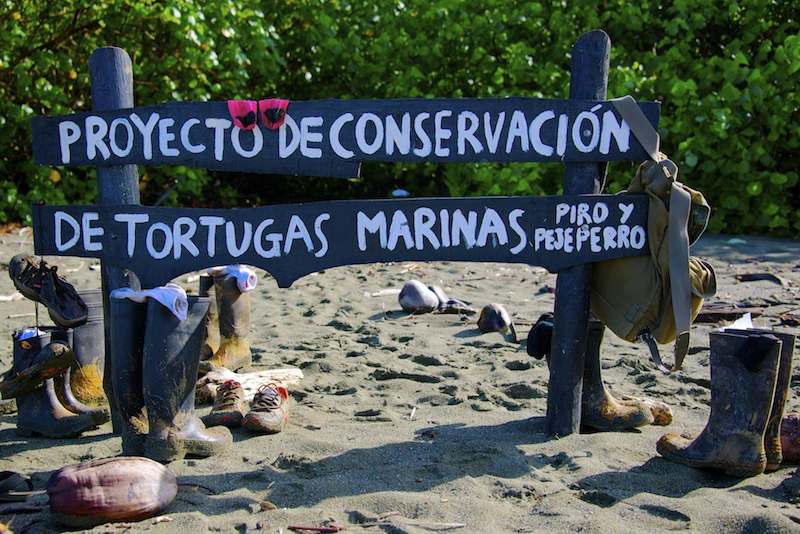
We learned how to spot turtle tracks and measure them in the sand to identify the species.
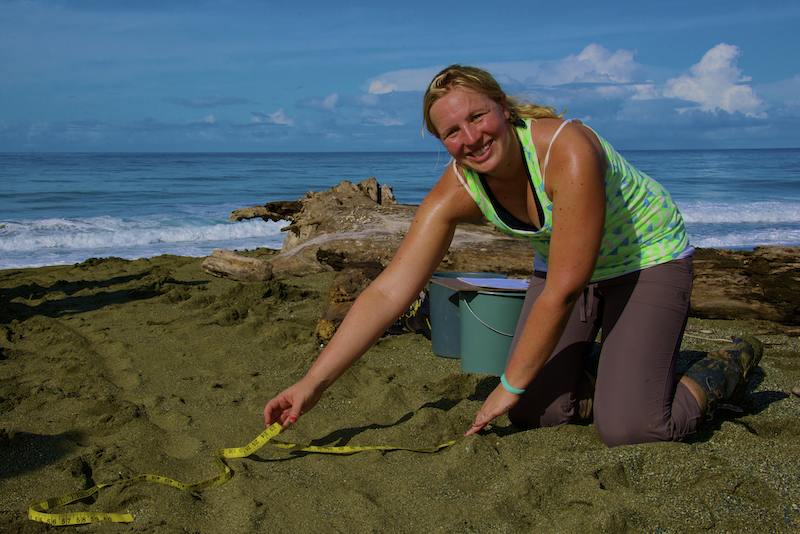
Then our guide dug a small hole, where the eggs were. We then carefully lifted all 53 fragile eggs out of the nest.
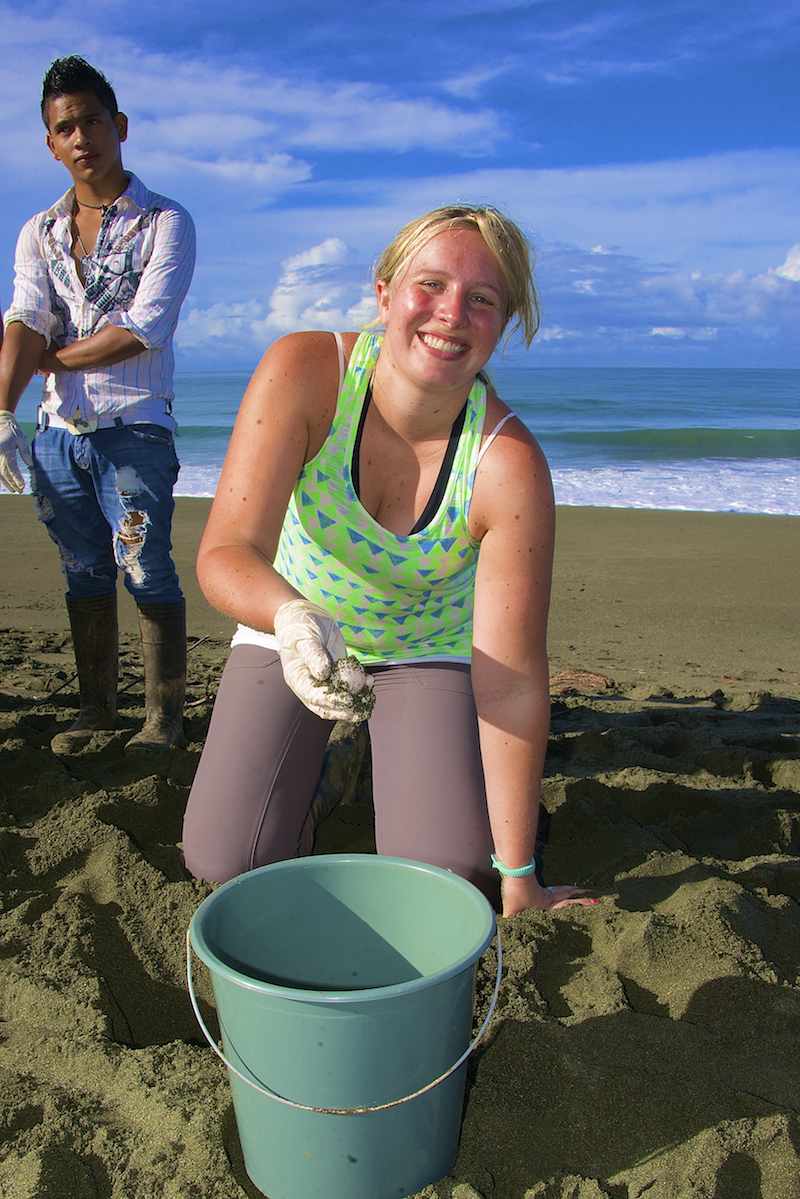
Transported the eggs a half-mile up the beach to the conservation area and re-buried the eggs so they could hatch safely in about 45 days.
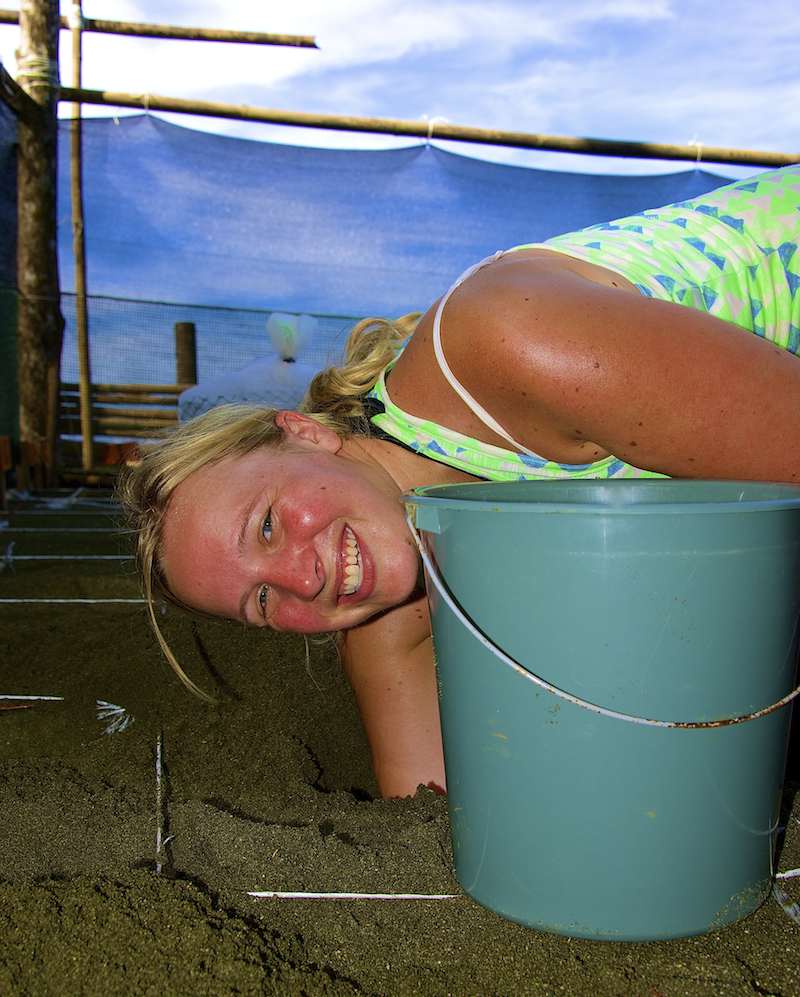
It was an incredible once-in-a-lifetime experience. Getting muddy (even after one of my rubber boots busted) was only half the adventure.
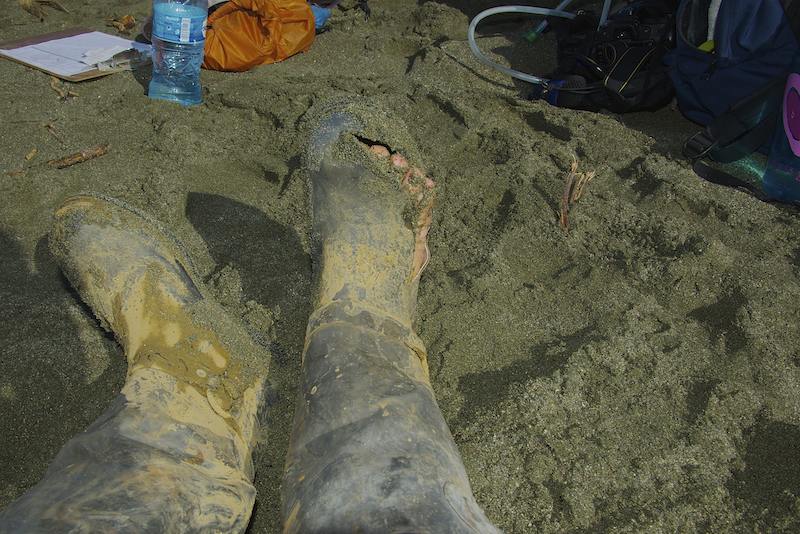
Get Involved! You can come to Blue Osa anytime from April until September and join this extraordinary and noble adventure to help save sea turtles.
A few fun facts about Sea Turtles:
• Sea turtles are one of the Earth’s most ancient creatures.
• There are seven different kinds of species that have been around for 110 million years!
• Once males hatch they go into the water and they never return to land. Therefore, most of what we know is based upon observing the females laying their eggs and then watching the hatchlings.
• After hatching, the baby sea turtles may take as long as a week to dig their way out of the hole. The emerge at night and move towards the ocean, where they live solitary until it is time to mate.
• Mating season is from March to October.
• Depending on the species, the female will lay between 50-190 eggs. But few survive.
[et_bloom_inline optin_id=”optin_23″]
The Turtle Release and Patrol Tour
Turtle Release
Performed in the early hours of the morning, from 5:30 to 7:00 am to avoid high temperatures and predators. We will pass through the station on a path that will take us between 10 to 15 minutes to the nursery.
We encourage all participants to have boots for the condition of the trail and crossing the Rio Piro.
Once we were in the nursery, we received an introduction to the project. We learned about the goals of the turtle nursery.
We then proceeded to the release of turtles along the beach.
All of the baby turtles we realeased were from the areas where they were collected and hatched by the mother.
Babies will be releasing in the upper part of the beach, which help them perform imprinting – a process of recognition of the beach which will help them to return when they are adults.
Time of year – August to November. (Sometimes in December and early January. For other times of the year, please inquire for turtle activity.)
Price: $40 per person
Location: the Piro and Pejeperro beaches
Departure: 7:00 pm
Duration: 3 – 4 hours
Morning Patrol and Sea Turtle Egg Recovery
We will depart at 5:00 am on their beach. Once there, you will be recording the tracks that were not recorded the night before. You will also be relocating nests that are in the danger zones, which are too close to rivers or high tides, and bring the eggs to the hatchery. You will lastly mark the nests employing the method of triangulation to allow for the release of hatchlings from our hatchery nests.
Time of year – April to November (For other times of the year, please inquire for turtle activity.)
Price: $40 per person
Location: the Piro and Pejeperro beaches
Departure: 5:00 am
Duration: 2.5 -3.5 hours
Night Patrol
You will leave at 7:30 p.m. out of the Biological Station Piro.
All patrols will be given an orientation of the activity before departure. Monitoring patrols will be carried out on the Piro beach. As the turtles come out of the ocean to lay their eggs, we will be marking them, taking measurements of the carapace length, species identification by counting scales, and scute. We will also perform a health assessment.
You will be awestruck as you watch nature in action.
Time of year – April to November (For other times of the year, please inquire for turtle activity.)
Price: $40 per person
Location: the Piro and Pejeperro beaches
Departure: 7:00 pm
Duration: 4 – 5 hours


